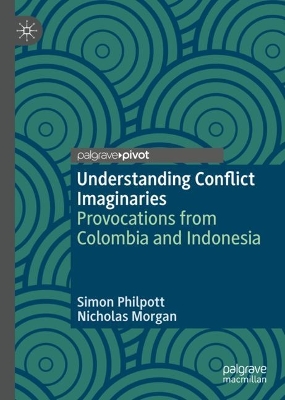Rethinking Peace and Conflict Studies
1 total work
This Palgrave Pivot argues that if we are to understand civil conflict we need to grasp how everyday life is shaped by local conflict imaginaries. In order to examine this claim the book sets out to explore the contours of conflict imaginaries from two very different sites of conflict. Both Colombia and Indonesia have suffered from the collective trauma of political violence but in very different social, cultural and political contexts. Sketching out what they mean by a conflict imaginary, and explaining the relationship of this key concept to social imaginaries more broadly, the authors provide a historical overview of how political violence has been represented in both countries. They go on to outline the original qualitative research methods used to provide empirical evidence for the importance of conflict imaginaries, methods which allow them to explore the images and metaphors that underpin the spatial, chronological and emotional cartographies through which people make sense of political violence. With an emphasis on the construction of place-based knowledge, they consider the role of the local, the national and the global in the imagining of civil conflict, and show how film can be used to explore the imaginative worlds of social actors living alongside violence, revealing in the process the need to take seriously their hopes, fears, dreams and fantasies.
